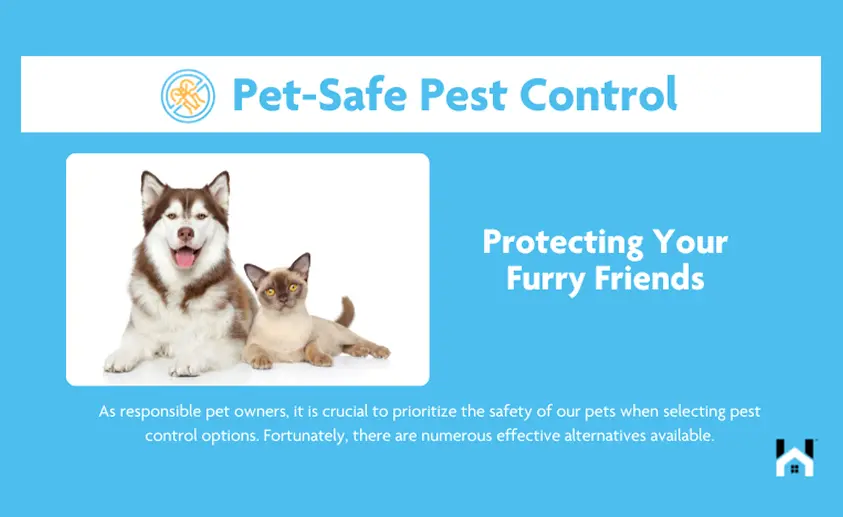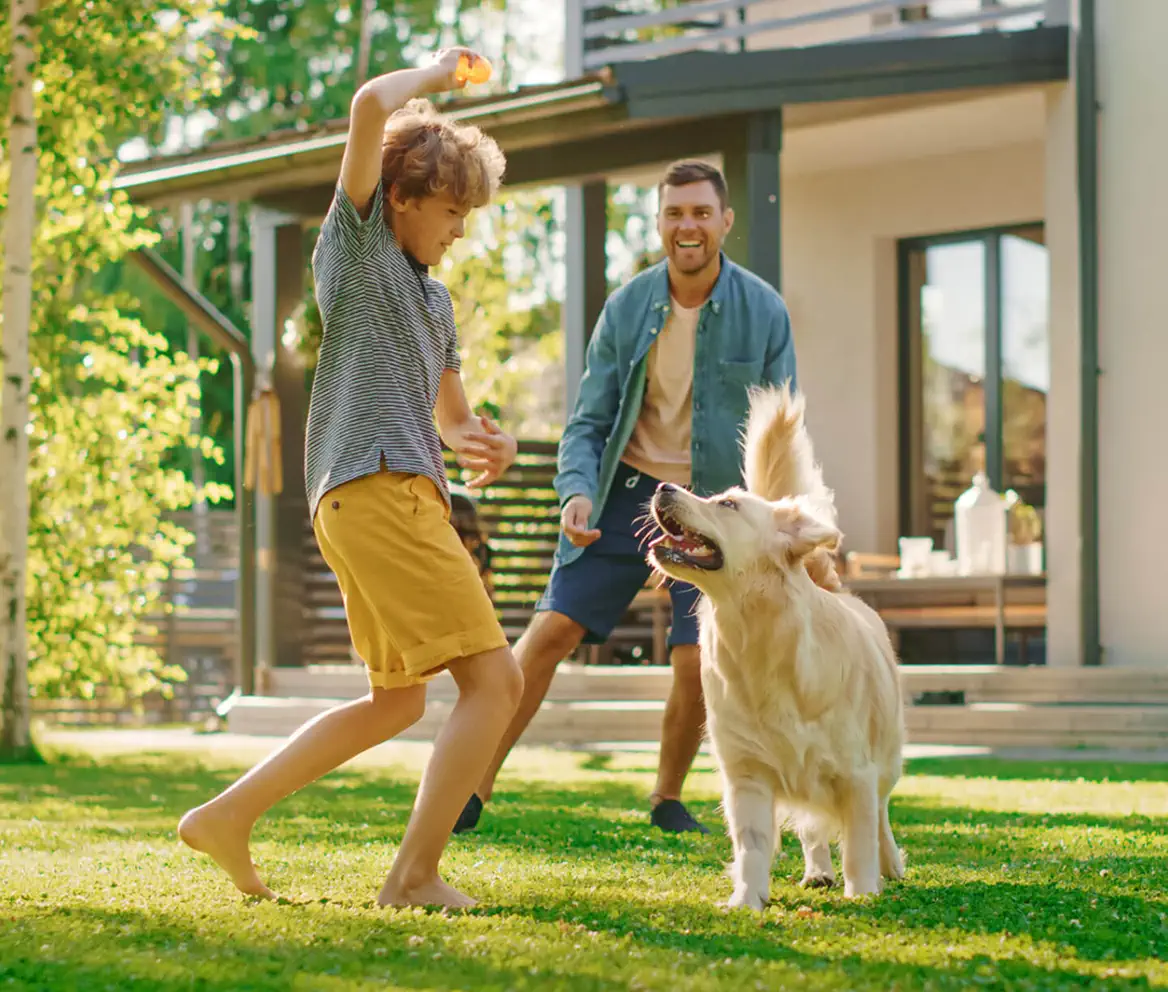Pet-Safe Pest Control: Protecting Your Furry Friends

In terms of maintaining a pest-free home, pet owners encounter a unique challenge. Traditional pest control methods can be effective, but they may also pose significant risks to our beloved animals.
This article delves into the importance of pet-safe pest control, assisting you in identifying common household pests and understanding the potential dangers they pose to pets.
It covers effective, non-toxic pest control solutions as well as preventive measures to keep those unwelcome intruders at bay. You will also learn essential steps to take if your pet is ever exposed to harmful chemicals.
By prioritizing the safety of your furry friends, you can successfully maintain a pest-free home.
The Importance of Pet-Safe Pest Control
Maintaining a pest-free home is essential, and the significance of pet-safe pest control cannot be emphasized enough. Traditional pest management methods frequently utilize harmful chemicals that can present serious risks to our beloved pets, both through immediate exposure and potential long-term health consequences.
As responsible pet owners, it is crucial to prioritize the safety of our pets when selecting pest control options. Fortunately, there are numerous effective alternatives available, such as organic pest control and non-toxic pest repellents, that help ensure our homes remain safe environments for everyone, including our four-legged family members.
Why Traditional Pest Control Methods Can Be Harmful for Pets
Traditional pest control methods often involve harmful chemicals that can pose significant risks to the health of pets who might unknowingly come into contact with them. These substances can linger in the environment, exposing our cherished animals to potential hazards associated with chemical exposure, including allergic reactions and long-term health concerns.
Pets may inadvertently ingest these chemicals by licking treated areas, which can lead to serious health complications requiring veterinary advice or intervention. As responsible pet owners, it is essential to recognize these risks and pursue pest control solutions that prioritize the safety of our pets.
Common harmful chemicals such as organophosphates, pyrethroids, and carbamates can negatively impact a pet's nervous system, resulting in symptoms like drooling, vomiting, and lethargy. Prolonged exposure to these substances may lead to more severe issues, including respiratory problems or neurological damage. If a pet accidentally ingests any pest control product, it is crucial to consult a veterinarian immediately, as prompt intervention can be vital in preventing serious harm.
To reduce these risks, many pet owners should explore safer pest control alternatives, such as natural repellents or integrated pest management approaches. These methods emphasize prevention and non-toxic strategies that effectively keep both pets and pests at a safe distance.
Common Household Pests and Their Dangers to Pets
Household pests, including fleas, ticks, rodents, and various insects, can present significant risks to the health and well-being of our pets. Recognizing these pests is crucial not only for effective pest management but also for understanding the potential health hazards they pose to animals.
For example, fleas and ticks are well-known for causing skin irritation and transmitting diseases like Lyme disease to pets, while rodents can introduce harmful parasites and diseases into our living spaces. Therefore, comprehending the biology and characteristics of these pests is essential for pet owners who want to safeguard their furry companions effectively.
Identifying and Understanding Common Pests
Identifying and understanding common household pests is essential for developing effective pest management strategies and safeguarding pet health. Certain pests, like ants, cockroaches, and bedbugs, possess distinct characteristics that enable homeowners to recognize them quickly and take the necessary actions. By understanding their lifecycle and behaviors, one can effectively prevent infestations and manage pest populations.
Additionally, regular pest monitoring is crucial for detecting issues before they escalate, ensuring a safe environment for pets.
To identify these nuisances, it is important to observe visual cues such as droppings, bite marks, or unusual trails, which often indicate the presence of specific pests. Behavioral patterns, including nocturnal activities in rodents or sudden swarming in insects, also provide valuable insights for identification. Understanding the various stages of a pest's lifecycle—from eggs to adult forms—can guide targeted control measures, improving the effectiveness of eradication efforts.
By implementing proactive monitoring techniques, such as setting traps or conducting thorough inspections, homeowners can stay one step ahead in the ongoing battle against household invaders.
Safe Pest Control Solutions for Pet Owners
For pet owners, identifying safe pest control solutions is crucial for maintaining a healthy home environment while also protecting their beloved animals. Fortunately, a variety of options exist that prioritize the safety of pets without sacrificing effectiveness.
Natural pest repellents, organic pest control methods, and non-toxic pest solutions are just a few of the alternatives available. Moreover, humane pest removal techniques can effectively manage pest populations without causing harm to animals, allowing pet owners to seamlessly blend safety with practical pest management.
Natural and Non-Toxic Methods
Natural and non-toxic methods of pest control provide pet owners with effective solutions that significantly reduce the risks associated with harmful chemicals. By utilizing natural pest repellents, such as essential oils, pet owners can deter common pests safely without jeopardizing the health of their pets. DIY pest control options enable pet owners to address pest issues using household ingredients that are not only eco-friendly but also safe for pets. By adopting these methods, pet owners can protect their homes while ensuring a safe environment for their beloved companions.
For example, a mixture of peppermint oil diluted with water can serve as an excellent deterrent for ants and spiders, while lavender oil is well-known for effectively repelling moths and fleas. To create these blends, one simply combines 10 to 15 drops of essential oil with water in a spray bottle and applies it to areas where pests are frequently spotted. Additionally, diatomaceous earth—a natural powder—can be sprinkled in cracks and crevices to eliminate crawling insects without harming pets.
By implementing these strategies, pet owners not only safeguard their households but also promote a holistic approach to pest management. This allows them to maintain a harmonious balance between comfort and safety in their living spaces.
Professional Pet-Safe Pest Control Services
When faced with significant pest infestations, professional pet-safe pest control services can be an effective and reliable choice for pet owners seeking solutions. These services typically employ extermination methods and humane traps that are safe for pets, ensuring that the treatment process is handled with care for both the animals and the pests.
They utilize trusted pest control products specifically designed to minimize risks to pets, enabling comprehensive pest management while prioritizing the safety of beloved animals within the home. Choosing a reputable service can provide peace of mind for concerned pet owners.
Working with skilled pest management professionals not only addresses the immediate pest problem but also contributes to long-term preventive strategies. Clients can expect thorough assessments of their homes, along with tailored treatment plans that effectively target specific pests while ensuring a safe environment for their pets.
Providers who prioritize humane trapping methods and eco-friendly solutions demonstrate a commitment to ethical practices, aligning with the values of conscientious pet owners.
Therefore, opting for a professional service that balances efficiency with compassion can ultimately create a healthier living space for both humans and their pets.
Preventing Pests from Entering Your Home
Preventing pests from entering the home is one of the most effective strategies for creating a safe, pest-free environment for pets. Implementing pest control barriers, such as sealing cracks and using screens on windows and doors, can greatly reduce the likelihood of infestations.
Furthermore, practicing good outdoor pest control techniques—like maintaining a clean garden and removing debris—is essential in keeping pests away. By taking these proactive measures, pet owners can cultivate an environment that feels welcoming for their pets while remaining uninviting to pests.
Tips for Keeping Pests Away
Maintaining a pest-free environment requires consistent effort and the application of practical pest prevention strategies that prioritize both effectiveness and the safety of your pets.
Plus employing home remedies such as vinegar and baking soda, it is crucial to regularly inspect your home for entry points that pests may exploit. Sealing cracks and crevices not only helps prevent pest infestations but also enhances the overall energy efficiency of your home.
Another pet-safe approach involves using diatomaceous earth, which serves as a natural insecticide by dehydrating pests upon contact. Regular cleaning, particularly in areas where food residue tends to accumulate, will significantly reduce the likelihood of attracting pests.
Ultimately, the key to successful pest control lies in regular maintenance and adopting a proactive mindset rather than waiting for problems to arise.
What to Do if Your Pet is Exposed to Pest Control Chemicals
If a pet has been exposed to pest control chemicals, it is important to act swiftly and with caution to ensure their health and safety. The first step is to assess the situation by identifying the type of chemical involved and the level of exposure.
Should you notice any signs of adverse reactions, such as vomiting or lethargy, it is essential to seek veterinary advice immediately. By following emergency procedures and understanding safe pest treatment options, you can significantly reduce risks and help safeguard your pet's well-being in these situations.
Emergency Steps and Follow-Up Care
In the unfortunate event that a pet is exposed to pest control chemicals, it is crucial to follow emergency steps and provide appropriate follow-up care to facilitate their recovery. First, remove the pet from the contaminated area and rinse any exposed skin or fur with water to eliminate residual chemicals.
After assessing their condition, it is essential to contact a veterinarian for guidance on further actions and potential treatments. Maintaining open communication with the veterinarian during the follow-up care process is vital for ensuring the pet's health and safety.
Plus rinsing affected areas, it is advisable to closely monitor the pet for signs of distress, such as excessive drooling, vomiting, or unusual lethargy, which could indicate toxicity. It is also important to check their paws and underbelly, as these areas often trap chemicals. If the pet shows any concerning symptoms, seeking emergency veterinary assistance immediately is recommended.
Cleaning the contaminated area with soap and water can help eliminate residual exposure. Follow-up care should not be viewed merely as a suggestion; it is necessary to manage any latent effects of the chemicals appropriately and to ensure that the pet is on the path to recovery. Consistent communication with the veterinarian can provide reassurance and enable pet owners to make informed decisions regarding their pet’s health.

Need help with
your project?
Whether you’re planning a project or just trying to remember when to clean your gutters, we’ve got your back (and your inbox).



